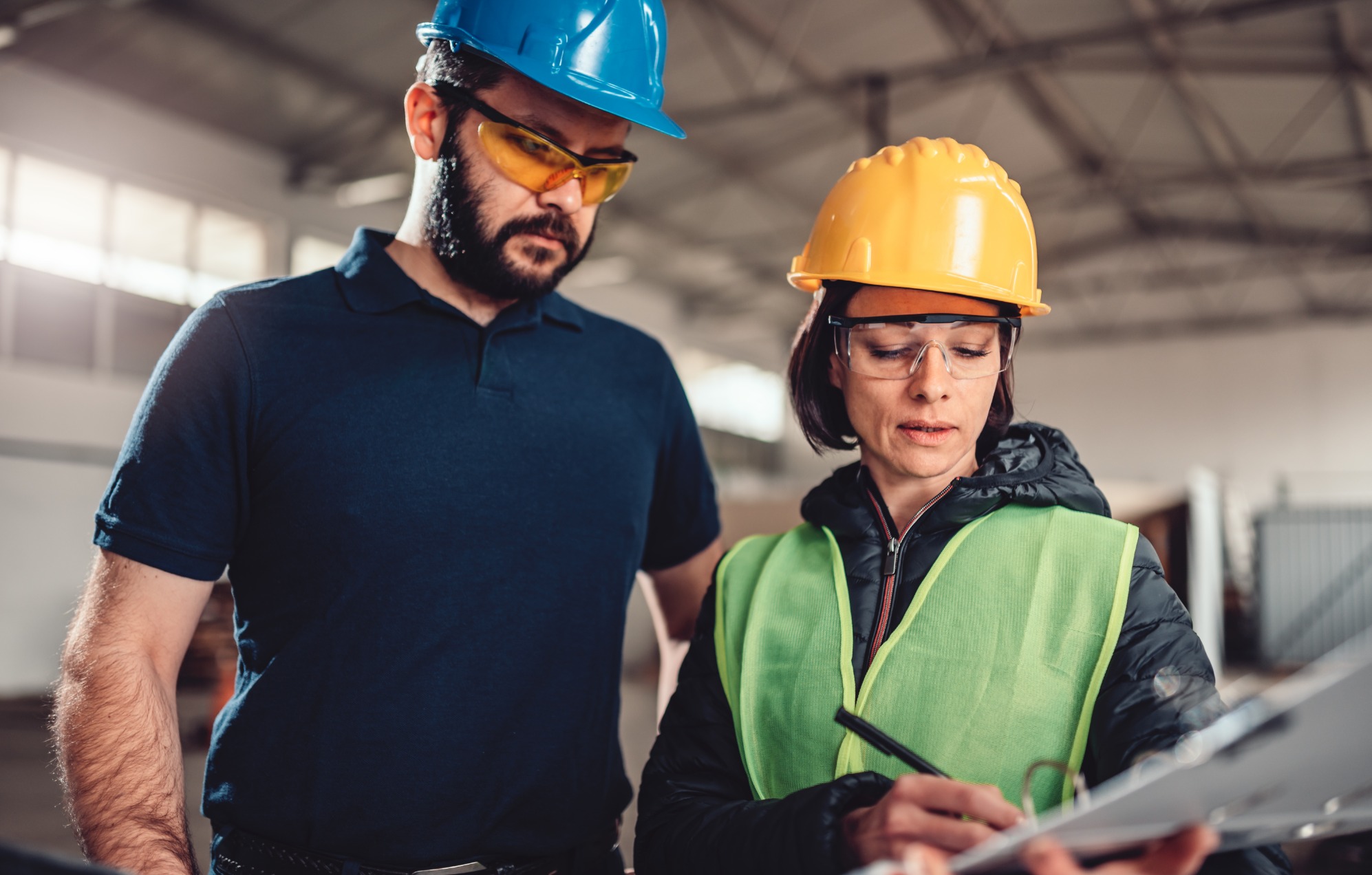Considering the number of hazards attributed to working in the construction industry, it’s not difficult to imagine the impact this has on the health and safety of the workers involved. Despite improved best practices throughout the industry, working in such dangerous and unpredictable environments can bring about some health and safety nightmares.
There are few sectors in the UK that produce more workplace injuries and illnesses than the construction sector. A grim statistic from 2017 states that the industry is responsible for the second-highest mortality rate of any sector in the country and it’s not too surprising – a combination of operating industrial machinery and handling often hazardous materials creates a potentially deadly working environment.
Some of these construction health and safety ‘nightmares’ are more prominent than others, and while it might seem overwhelming trying to safety proof a construction site, these nightmares can be avoided.
In this article, we lay out some of the most troublesome health and safety hazards and how best to avoid them to help keep your workers safe.
5 Common Construction Health & Safety Hazards
1. Asbestos
Asbestos is a set of six naturally occurring minerals often found on construction sites. When these minerals are disturbed or damaged, as is easily done during normal construction work, the asbestos fibres are released into the air.
Inhaling these fibres is incredibly dangerous and can be fatal – around 5,000 workers a year are killed because of it and the life-threatening diseases that develop due to inhalation. These diseases include lung cancer, mesothelioma and pleural thickening.
An estimated 500,000 public buildings in the UK are thought to contain asbestos – so knowing how to protect your workers against it is crucial. The key is to ensure workers are adequately prepared.
Make sure that if asbestos is known to be present at the site, that workers have been informed where it is, and the work planned around it accordingly. For workers on site, using protective equipment such as a suitable face mask, is vital. Don’t let waste build up on site and ensure it is double-bagged and disposed of properly and wash before breaks and before going home to ensure you’re not bringing traces of asbestos away from the site with you.
Asbestos kills an average of 20 tradespeople every week as a result of exposure.
2. Electricity
Electrical live parts present a great health and safety risk at construction sites. There are several elements that anyone performing construction work needs to be aware of – electrical systems within buildings, overhead power lines and underground cables. If approached incorrectly, dealing with any of these can be fatal.
To avoid any contact with electricity, it’s important that workers only use approved equipment on the job. This equipment is normally properly insulated and designed to prevent the flow of electricity should someone touch a live wire. The same goes for protective gear – your workers must be equipped with face and eye protection, as well as properly insulated head protection in case of contact with overhead wires.
There are also two simple ways to prevent accidental contact. If an electrical component isn’t being used, then it makes sense to de-energise it completely. Rubber mats, conduit and other insulation equipment should also be installed around electrical components.
3. Manual Handling of Materials
One of the major health and safety nightmares affecting construction sites is simply handling materials. Workers in the construction industry are more likely to be carrying heavy loads, so it’s crucial to know how best to avoid injury.
A lot of factors are in play when it comes to handling materials. Weight is of course an important factor and creates risk of injury, but so is the distance you have to carry an item. The way a worker approaches carrying an item will have a huge impact on the risk level also. Whether there is any bending, stretching or other strenuous, awkward positioning involved can contribute to a health and safety risk.
Avoiding this health and safety issue entirely is difficult. To try and minimise risk to workers, employers must assess the risk before the work is performed. The task should be redesigned where possible to avoid hazardous lifting, potentially by mechanising the job instead.
In this way, it’s key that employers provide mechanical assistance wherever possible to try and reduce the risk of injury.
4. Unintended Collapse
If not properly managed, construction sites can be dangerous and volatile places. Unplanned structural collapse can seriously injure anyone within the vicinity of the job site, so it is crucial steps are taken to avoid the possibility.
In order to safely carry out the work, a contractor must be provided with the relevant information for the building. This information includes the building’s stability and structural form – only then can the contractor plan and safely carry out the work. To prevent any health and safety nightmares, a designated competent person must perform a thorough structural survey of the building, which should consider the age of the structure, its previous use and any neighbouring buildings.
The information provided is used to formulate the necessary steps to prevent structural collapse. Temporary supports are then created by a competent person and must be designed to withstand expected load sizes. These structures must never be overloaded.
To prevent injury during building demolition, there are some steps to be taken. Exclusion zones and hard-hat areas must be designated clearly, while walkways need to be covered to prevent injury by debris. High-reach machines should be used, and the machine cabs need to be reinforced to protect the worker inside.
Unintended structural collapse can cause life-changing injuries, so the law states that all alteration, demolition and dismantling work needs to be carried out by competent people.
5. Working at Height
Construction sites often involve a lot of working at height and according to the HSE, this is where the largest number of fatalities and injuries occur. Defining working at height is simple – it’s a place where a person could fall a distance significant enough to cause personal injury, were there no precautions in place.
Employers can make simple changes to prevent this health and safety nightmare. There are several factors to consider when working at height – the height of the task, the duration and frequency a worker will spend at that height and the surface condition. However, before the task is undertaken, workers should avoid work at height where it is practicable to so.
If working at height can't be avoided, then there are precautions both the employers and the workers can take to minimise risk. For employers, it’s key to ensure workers can safely get to and from where the task is. The equipment they are given must be suitable for the task and well-maintained and protection from falling objects should be given.
For workers, extra care must be taken near fragile surfaces. It's critical that workers do not overload ladders – equipment and materials must be considered before working at height. A ladder must never be rested against a weak surface or be used for a heavy task and workers must never overreach on a ladder.
Remaining Vigilant On-Site
It’s incredibly important to do everything you can to prevent health and safety nightmares in the construction industry. The industry has taken great steps to improve already, but these are just some of the most prevalent risks. It’s important to consistently remain vigilant to keep your construction site as safe as possible for all involved.
.png)




